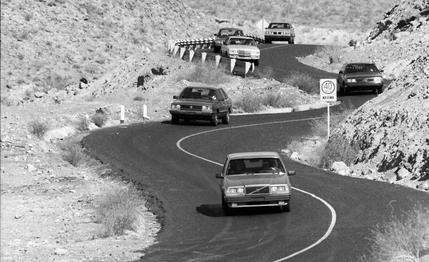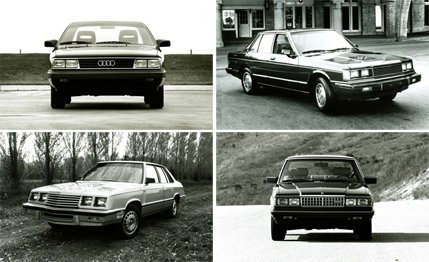 Archived Comparison
Archived Comparison
This affair began as an honest attempt to evaluate eight sedans in the European idiom over a 2300-mile route between Southern California and the tip of Baja California in Mexico. Decent, responsible automotive journalism. Road & Track does this high-adventure stuff all the time. On more than one occasion, they have encountered overcooked cheeseburgers and canceled motel reservations. It even rained once. As for us, it got a little more complicated. In retrospect, that was to be anticipated, when you consider that our widely esteemed technical director, Donald Sherman, organized the campaign.
Before the mission was completed, the hapless followers of Sherman faced bouts of the turistas, numerous encounters with the Mexican federales, a high-speed collision with a cow, floods, maroonings, the deep-sixing of a Datsun Maxima, and the consumption of more high-octane tequila and stomach-scouring Mexican food than any collection of Americans since Blackjack Pershing chased Pancho Villa.
But let's not carry this military analogy too far. If our Sherman, and not William Tecumseh, had devised the original March to the Sea, Richmond, Virginia, would be the capital of the United States and Jesse Helms would be president. So be warned that what follows is no normal meander over tic byways in search of automotive truth. This, Bucky, was a freaking war...
Sunday: We leave Newport Beach (yes, yes, we know, we know) in the midst of the 49th monsoon to hit Southern California this year. Ugly nimbus clouds roll in off the sea. There are ten of us, high-type professionals all. There are eight automobiles: two American (a Pontiac 6000STE and a Dodge 600ES); two Japanese (a Datsun Maxima and a Toyota Cressida); and four from Europe, where this brand of machine was born (a new Audi 5000S, a VW Quantum, a Saab 900 Turbo, and a Volvo 760GLE). Euro-sedans. Four-doors. Priced between $10,000 and $20,000, bracketed by the likes of the Honda Accord on the low side and the BMW 528e on the high. The mission: a two-day, 1150-mile, America-versus-the-world run to Cabo San Lucas at the tip of Baja, then a one-day layover in the sunshine and two days back. Our destination today is an oasis in the central Baja desert called San Ignacio.

Reaching the border is simple. Our one nod to preparation is a supermarket stop to grab some bottled water. Otherwise, we exit the United States with the same level of preparation one might employ for a trip to the K mart: no tools, lights, or first-aid kits. When other magazines go to Baja, they're outfitted like the Afrika Korps. But we have one trump card: a childlike faith that our leader will bring us through.
A chunky guard waves us into Mexico at Tijuana. The four-lane to Ensenada is pocked with tightly radiused curves. An ancient Volvo wagon with California plates races us at 80 to 90 mph all the way to Ensenada, but none of our eight cars is even breathing hard as we stop for lunch. Our next encounter with Mexican officialdom comes in the parking lot of Hussong's Cantina, where one of the least civilized members of our group [Yates—Ed.] is arrested for recycling several liters of Dos Equis against a wall. Lindamood, the only one among us who speaks any Spanish, gets the culprit off with a ten-dollar fine by denouncing him to the cops as a pig.
We plunge into fast, twisty two-lanes south of Ensenada. Route 1 rides high along some splendid seacoast vistas toward San Quintín and then bores inland to the mountains at El Rosario. We wonder but say nothing about customs. Having blasted past the place where the Maneadero checking station was supposed to be, we may be operating as Yanqui wetbacks, without the faintest authorization to penetrate so deeply into the nation. No matter: the cars are running well, the night is cloudless, and the road is clear, save for an occasional bus and the odd battered pickup.